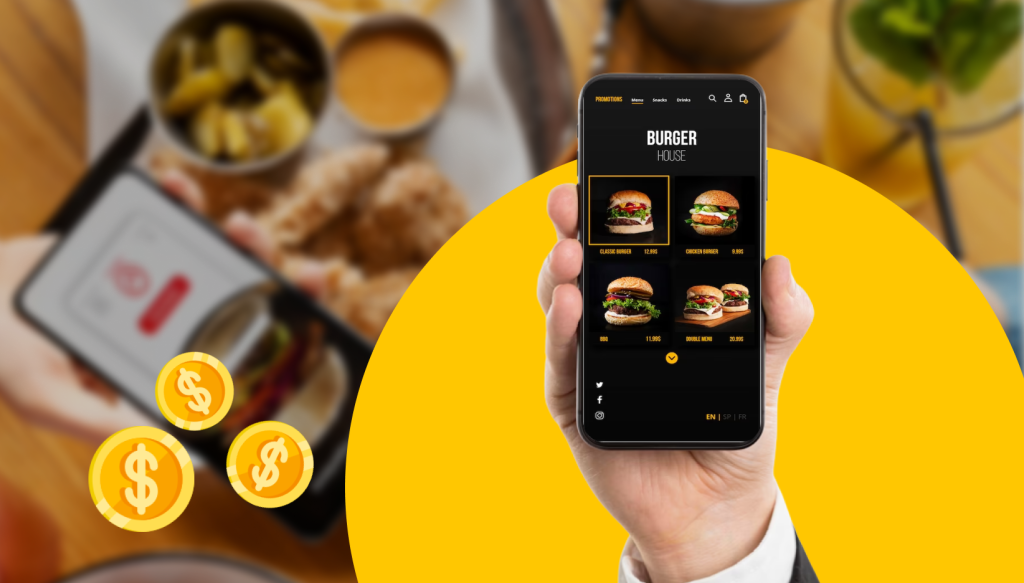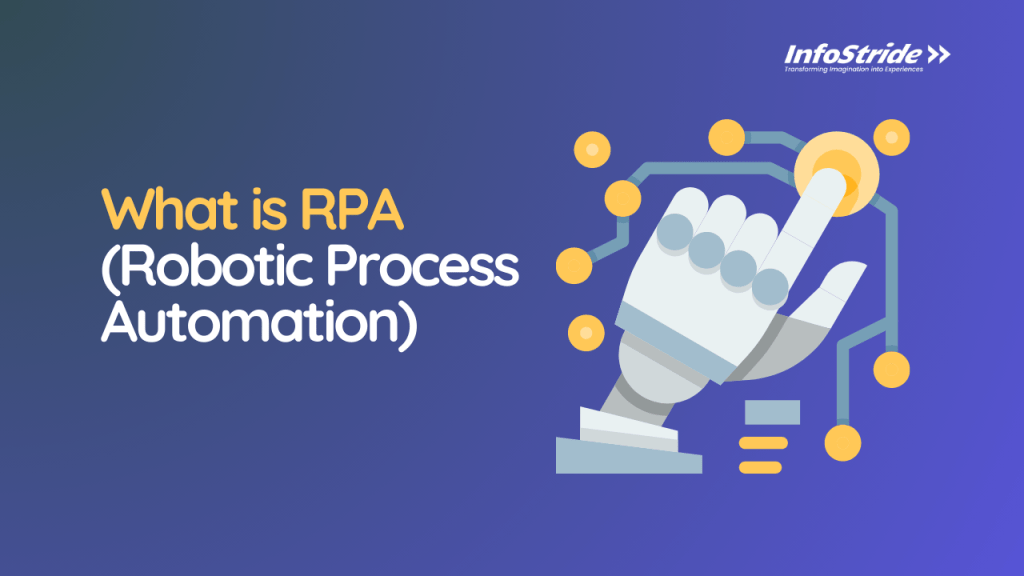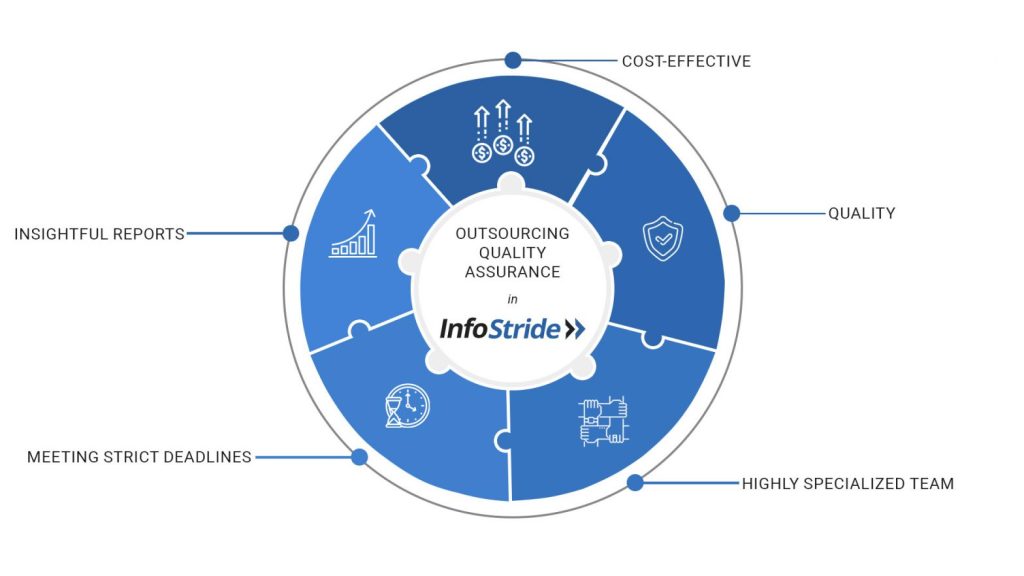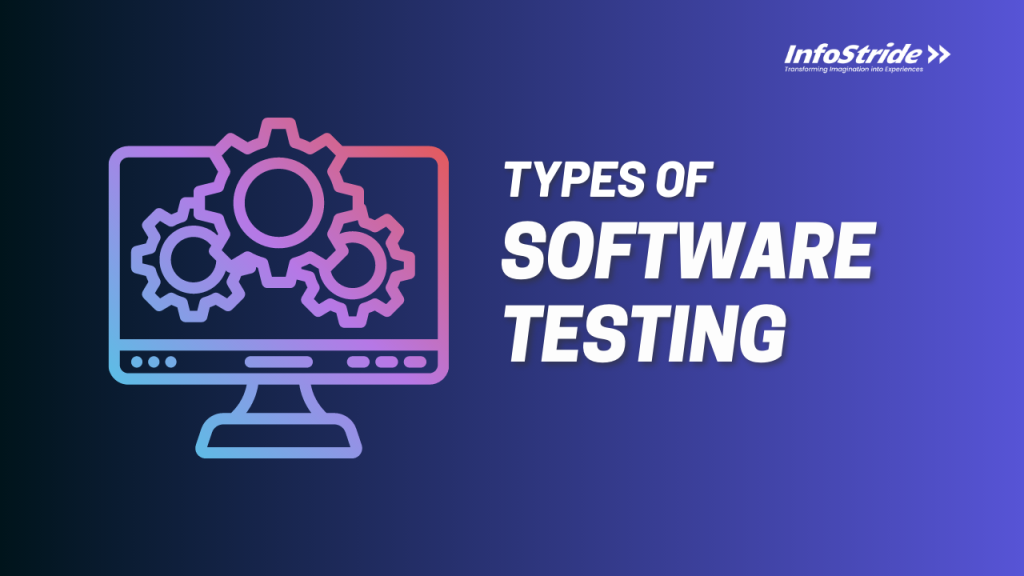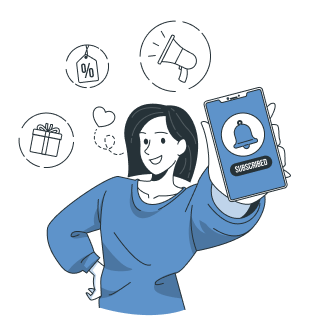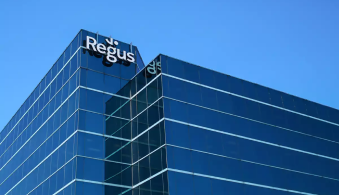Table of Content
What is the average on-demand food delivery app development cost in 2024?
Top 3 Key Challenges in Entering the Food Delivery Market
How Does a Food Delivery App Work?
6 Key Factors Influencing The Food Delivery App Development Cost
The Hidden Costs of Food Delivery App Development
3 Proven Tips to Optimize Food Delivery App Development Costs
Since the advent of the COVID-19 pandemic, the demand for on-demand food delivery apps has witnessed an unprecedented surge. This trend is powerfully supported by a wealth of food delivery statistics, leaving no doubt about the remarkable changes in consumer behavior and preferences.
Nearly every individual in the US orders food delivery, as per a study by Gloria Food. The research revealed that a substantial 86% of Americans had ordered food delivery at least once a month.
Given the record-breaking rise in popularity of food delivery platforms such as Uber Eats and DoorDash, it’s unsurprising that more businesses are now eager to embark on similar on-demand food delivery solutions.
Are you looking forward to creating a food delivery app but are confused about food delivery app development cost estimates? Well, the answer to which is explained below in the article.
What is the average on-demand food delivery app development cost in 2023?
A quick Google search will unveil a price range that spans from $40,000 to over $300,000. However, rates can vary depending on the features and functionality of the app, the platform it is developed for, and the development team you work with.
Well, don’t worry. In this blog, you’ll explore a comprehensive analysis of all the key factors that influence the on-demand food delivery app development cost. If you are on a tight budget, we’ll also reveal some handy tips to optimize mobile app development costs all while delivering a high-quality food delivery app to the market.
But before that, it’s important to have a look at key challenges startups face while entering an on-demand food delivery market.
Top 3 Key Challenges in Entering the Food Delivery Market
Entering the food delivery industry is exciting, but it comes with its share of challenges. To navigate this competitive landscape successfully, here are some of the key challenges you might face and potential solutions:
High cost of entry
The cost of developing and maintaining a food delivery app can be expensive. Businesses need to invest in software, hardware and development costs.
To minimize this challenge, businesses can choose a cost-effective technology solution, target a specific market and partner with local restaurants. Partnering with local restaurants can reduce the need for extensive delivery logistics by utilizing restaurants’ existing delivery networks. Additionally, local partnerships can tap into loyal customer bases and promote the app within the community, thereby lowering customer acquisition costs.
Fierce competition
The food delivery market is a crowded one, with many established players. Businesses need to find ways to stand out from the competition. To do this, businesses can focus on providing a unique and differentiated experience, such as offering a wider range of restaurants, providing faster delivery times and developing innovative features.
Complex operational management
Coordinating between restaurants, drivers, and customers in real-time involves intricate operational management. This intricate coordination presents challenges that demand sophisticated operational solutions to ensure smooth order processing, efficient dispatching, and effective communication. This requires the assistance of a skilled development team.
How Does a Food Delivery App Work?
A food delivery app operates through a well-orchestrated process that involves 4 key stakeholders: customers, restaurant owners or merchants, delivery staff and the platform admin. Here’s a quick step-by-step breakdown of how a typical food delivery app works:
- A customer opens the food delivery app and selects the restaurant they want to order from.
- The customer browses the restaurant’s menu and selects the food items they want to order.
- The customer enters their delivery address and payment information.
- The customer places the order and the restaurant receives it.
- The restaurant prepares the food and packages it for delivery.
- A delivery driver picks up the food from the restaurant and delivers it to the customer.
- Once the order is completed, the platform admin deducts its commission and releases the remaining order value to the restaurants.
6 Key Factors Influencing The Food Delivery App Development Cost
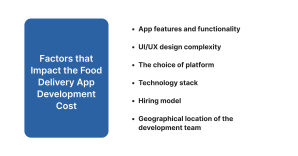
Many factors will affect the costs associated with on-demand food development app development Developing a successful food delivery app with a realistic budget means understanding how these factors influence the price tag.
Here are 6 key factors that impact the food development app development cost.
1. App features and functionality
The cost to build food delivery apps like DoorDash or Uber Eats depends a lot upon the number and complexity level of features you want to add.
Simple features take less development time and cost you less. But if you want to integrate advanced features like real-time tracking, multiple payment options and AI-driven recommendations, the development time will increase and you’ll have to spend more.
So, let’s now take a look at must-have features in the food delivery app development.
In the food delivery business, four main types of apps contribute to the overall ecosystem. These apps serve different purposes and cater to various stakeholders involved in the process: customers, restaurant owners or merchants, delivery staff and the platform admin. Each comes with distinct features that influence the overall development cost.
-
Customer App
This app is the front-facing interface for customers to place orders, explore menus, track deliveries and manage their accounts.
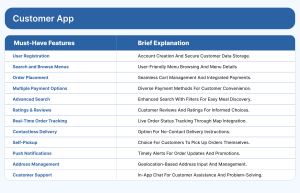
-
Restaurant App
This app allows restaurant owners or merchants to manage orders, update menus and interact with customers. Overall, the aim of the app is to streamline restaurant operations.

-
Delivery Staff Customer App
This app empowers delivery drivers to see their upcoming orders, track their earnings, navigate to customer addresses, communicate with customers and provide real-time updates on order statuses.

-
Admin App
The admin app is used by the owner of a food delivery platform to manage and oversee the entire food delivery ecosystem. It enables them to monitor operations, manage users, handle orders and ensure the smooth functioning of the food delivery business.
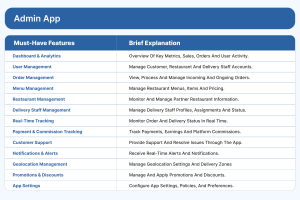
2. UI/UX design complexity
The design aspect of an app influences not only its visual appeal but also its user-friendliness, engagement, and overall user experience. Here’s how UI/UX design complexity affects the cost:
- High design complexity involves creating unique visual elements, layouts, and color schemes to match your brand identity.
- Customized branding increases development time, leading to higher costs.
- Intricate UI elements, animations and transitions enhance the visual experience but require more design effort.
- Adapting the app’s design for various devices and screen sizes requires extra effort.
- Ensuring the app is accessible to all users, including those with disabilities, necessitates thoughtful design adjustments.
These factors require the assistance of talented designers and talented front-end development specialists who possess a clear understanding of market needs, which results in higher food delivery app development costs.
3. The platform on which your app will run
Whether you decide to build your food delivery app either in Android or iOS or both, it will greatly increase your on-demand food delivery app development cost.
Developing for both iOS and Android platforms through a native app development approach requires creating separate codebases, as the two platforms have different programming languages (Swift for iOS, Java/Kotlin for Android). This leads to higher development costs compared to developing for a single platform.
To optimize costs, you can build an app using cross-platform frameworks if you want to target both the Android and iOS markets at the same time. Cross-platform apps are built using a single codebase, thus they are much less expensive than building native apps together simultaneously.
If you want to focus on superior user experience and high app performance, then it’s best to follow a stair-step approach, i.e., developing an app for one platform and then creating it later for another.
However, which platform to go with first is another topic of discussion. To help you save time, here are the factors to consider.
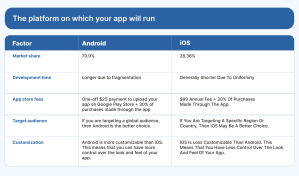
4. Technology stack
The technology stack refers to the combination of programming languages, frameworks, libraries, databases and tools used to build an app. The choice of technology stack can impact the overall on-demand food delivery app development cost.
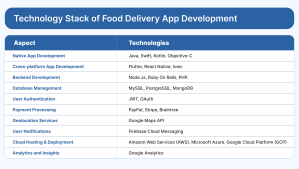
For example, opting for a feature-rich framework like React Native or Flutter can expedite the development process due to their code-sharing capabilities across platforms. This, in turn, can lead to reduced labor costs and quicker time-to-market.
Conversely, selecting a less popular or intricate technology stack might necessitate hiring specialized developers at higher rates, elevating overall expenses. Additionally, the stack’s licensing costs can significantly impact the budget; for instance, using a paid API like Google Maps for real-time tracking might incur ongoing expenses.
In essence, the technology stack’s implications ripple across the entire development lifecycle, ultimately shaping the financial outlay of bringing a food delivery app to fruition.
5. Hiring model
When it comes to finding app developers to build your food delivery app, you have three main options: build an in-house development, hire freelancers or work with an outsourced development team.
- In-house teams: This is the most traditional hiring model, where you hire full-time employees to work on your app. This gives you complete control over the development process, but it can be expensive and time-consuming to hire an in-house team of developers as you’ll be accountable for things like payroll taxes, benefits and any other legal aspects that come with hiring full-time employees.
- Freelancers: This is where you hire individual freelancers to work on your app. This can be the most cost-effective option, but it can also be the most time-consuming and difficult to manage multiple freelancers.
- Outsourcing: This is where you hire a third-party company that offers mobile app development services to develop your app. This can be a more cost-effective option than in-house development because it reduces the burden of all overhead expenses that come along with building an in-house development team.
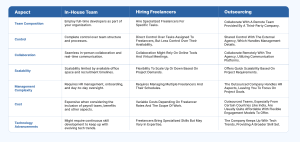
6. Geographical location of the development team
The location of your development team will greatly influence your on-demand food delivery app development cost.
The reason being? The cost of living in different countries varies greatly. In general, the cost of living in developed countries is higher than in developing countries. This means that developers in developed countries will typically charge more than developers in developing countries.
For example, the average hourly rate for a software developer in the United States is $100, while the average hourly rate in India is $25.
Of course, the location should not be the deciding factor in choosing an app development company because you don’t want to compromise on quality. However, the good thing is that mobile app development companies in developing countries like India have talent not only technically strong but also fluent in English, providing great value.
Here’s how much developers from different regions charge on an hourly basis:
The Hidden Costs of Food Delivery App Development
While above mentioned on-demand food delivery app development costs are quite apparent, there are many hidden costs that you can’t ignore. Let’s have a look:
Quality assurance
Once your food delivery app is developed, it needs to be rigorously tested to ensure that it delivers a top-notch experience to all users, including those with disabilities. Some vendors may charge additionally for quality assurance & accessibility services.
Iterations & enhancement
Change requests might arise throughout the ongoing development phase, introducing the need for revisions and subsequently impacting the overall food delivery app development cost. Thus, it is essential to set aside a contingency budget to address unexpected challenges or requirements that might arise during development.
Maintenance plan
After the launch, it’s important to continue updating and maintaining your application to ensure that it keeps pace with evolving customer needs and new technology trends. These maintenance costs are typically around 20% of overall app development costs per year.
Growth marketing
Even the best food delivery app won’t be successful if nobody knows about it. To promote your app and user acquisition, you must invest in growth marketing strategies such as social media advertising, search engine optimization, content marketing and among others.
Licensing fees
Within the realm of food delivery app development, you may encounter licensing fees that pertain to various aspects of your app’s functionality and operation.
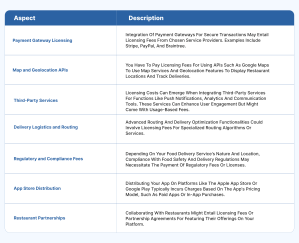
Scalability and performance optimization
If your food delivery app needs to handle an increasing user base or requires performance optimizations, additional infrastructure resources may be required. This could include investing in scalable server architecture, caching mechanisms, load balancers or cloud services. These infrastructure upgrades can result in additional costs during the food delivery app development process.
3 Proven Tips to Optimize Food Delivery App Development Costs
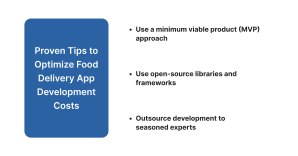
Reducing food delivery app development costs while maintaining quality and functionality requires strategic planning and resource management. Here are some highly effective tips to help you achieve cost-effectiveness in your project:
Use a minimum viable product (MVP) approach
Opt for an MVP app development approach to start with a basic version of your food delivery app that includes essential features. This can help you test your app and get feedback from users before you invest in a more complex and expensive development.
Use open-source libraries and frameworks
Use open-source libraries and frameworks such as Flutter, React Native, Node.js and Firebase available in the mobile app development community. They are free to use, which can reduce your on-demand food delivery app development cost.
Outsource development
If you have a limited budget, you may want to consider outsourcing the development of your app to a third-party development company that offers reliable mobile development services to the food delivery industry. With affordable and flexible engagement models to choose from, you can save money on development costs. However, it is important to choose a reputable company that has experience in developing food delivery apps.
Get a Free Quote to Build Your Food Delivery App Now
Are you ready to revolutionize the food delivery experience? Whether you’re a restaurant owner looking to expand your reach or an entrepreneur with a groundbreaking idea, our expert mobile app development team is here to turn your vision into reality.
With our expertise in on-demand app development solutions, we understand the intricate demands of the industry and the technology that drives it. Our seasoned professionals are eager to collaborate with you, crafting a personalized solution that aligns with your goals and caters to the expectations of your users. From intuitive user interfaces to real-time order tracking and seamless payment integrations, we’ve got you covered.
Contact us now for a free cost estimation and take the first step towards transforming the way people experience food delivery.
FAQs
1. What are the business benefits of entering a food delivery industry?
For startups, entering the food delivery industry offers several compelling business benefits that can accelerate growth and establish a strong market presence. Here’s a concise overview of these advantages:
- Low Barrier to Entry: Starting a food delivery service requires less initial investment compared to establishing a traditional restaurant.
- Wider Customer Reach: Access a broader customer base beyond your physical location, reaching new audiences.
- Flexible Business Model: Adapt and scale your offerings quickly based on market demands and trends.
- Revenue Diversification: Supplement revenue streams with delivery services, reducing dependency on dine-in sales.
- Scalability: Expand to new areas and markets without extensive physical setup.
2. What are future trends in food delivery app development?
The food delivery industry is constantly evolving, and there are a number of emerging trends that are expected to shape the future of on-demand food delivery solutions. It’s important to stay on top of these trends to gain a competitive edge:
- The Use of AI and Machine Learning: AI and machine learning are being used to improve the efficiency and accuracy of food delivery apps. For example, AI can be used to predict demand, optimize routes, and recommend restaurants to customers.
- Ghost Kitchens and Virtual Restaurants: Virtual restaurants and ghost kitchens will proliferate, catering to specific cuisines or dietary needs without brick-and-mortar setups.
- AR Menu Interaction: Augmented Reality (AR) will enable customers to interact with virtual menus, enhancing engagement and order customization.
- Contactless and Drone Delivery: Contactless delivery options and drone technology might become mainstream, ensuring safety and efficiency.
- Sustainability: Customers are increasingly concerned about sustainability and this is driving demand for food delivery apps that offer sustainable options. For example, some apps allow customers to track the environmental impact of their orders, and others offer delivery options that use electric vehicles.
3. How can I choose the right app development partner for my food delivery app?
When choosing an app development partner, evaluate the mobile app development services they offer to build on-demand food delivery solutions. Look for reviews and case studies showcasing their experience and expertise. Speak with them to learn about their communication practices and ask questions to assess their knowledge.
